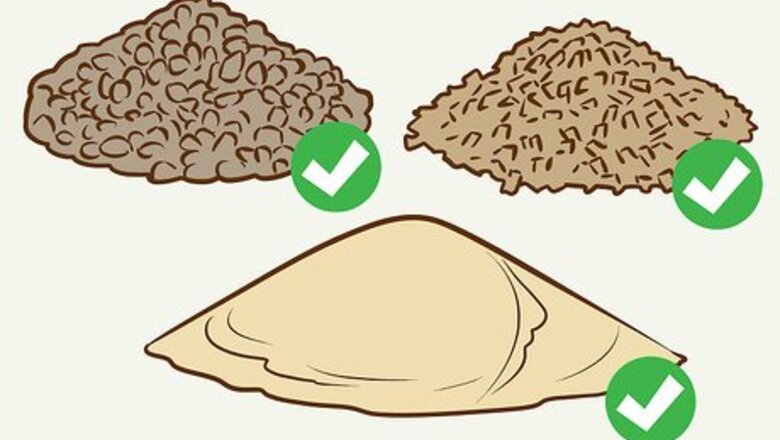
views
Evaluating the Surface
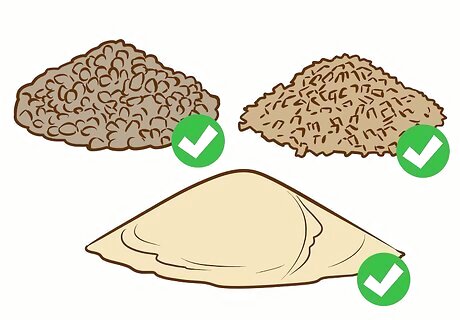
Ensure its fill is at least 12 inches (about 30cm) deep. Many playgrounds have a surface of wood chips, sand, or pea gravel. To provide an appropriate soft landing and prevent injury, this surface fill should be at least a foot deep and not have a hard surface such as asphalt beneath it. Some playgrounds have mats, especially if they are indoors. These mats should be safety-tested and made of rubber or a rubber-like material. Inspect the mats for any holes or tears.
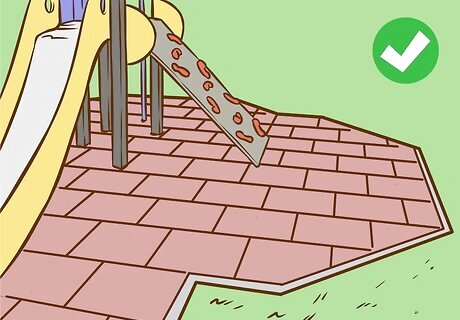
Check that landing surfaces are large enough. The fill or mats covering the surface around equipment should extend at least 6 feet (1.8 m) (about 2m) from the equipment in all directions, to allow for softer landings in the case of a fall from the equipment. Swings should potentially have a larger landing surface, at least twice the height of the suspending bar both in front and behind the swing set.
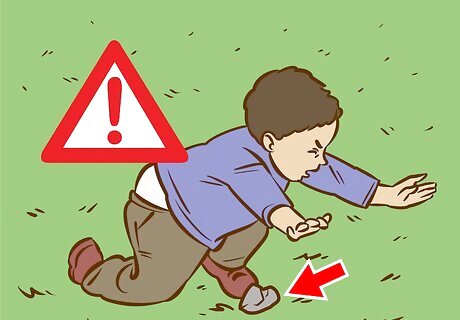
Spot any tripping hazards. Particularly in outdoor playgrounds, there may be tree stumps, rocks, or concrete footings that a child could easily trip over while running and playing. If you aren't able to remove these, you should at least point them out to your child. Keep in mind that pointing out a hazard doesn't do much to prevent your child from tripping, especially if they get caught up in play and are running without being careful. However, it can help if both you and the child are aware. You also want to inspect the ground around swings closely to ensure there aren't any large rocks or other debris that could injure a child falling or jumping off the swing. If there are too many tripping hazards, you may want to forbid your child from running or find a different playground without as many hazards.
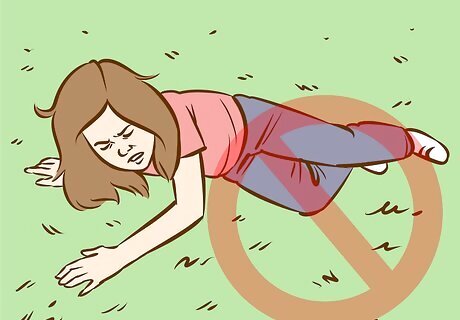
Avoid playgrounds with hard surfaces. Outdoor playgrounds on concrete or asphalt, dirt, or even grass don't provide enough cushioning to reduce the impact of a fall. These playgrounds can be very dangerous, particularly if there is elevated equipment. Generally speaking, you shouldn't allow your child to play on playgrounds with these types of surfaces at all. However, if most of the equipment is low to the ground and there's not much risk of the child getting seriously injured when they fall, it might be okay. Just be sure to keep a close watch.
Inspecting Equipment
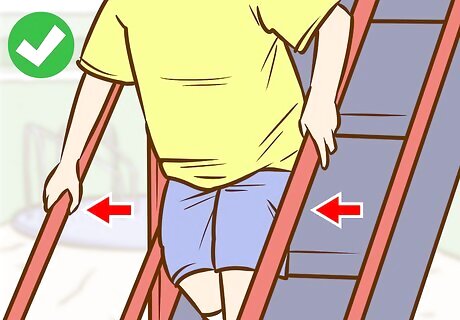
Look for handrails. If there are any elevated parts of the playground, such as the top of a slide or a suspended bridge, these should be equipped with handrails or guardrails to prevent children from falling from a height. Keep in mind that a fall from a height, even onto a soft landing surface, can result in a concussion or serious brain injury. If you have any concerns about the safety of elevated equipment, accompany your child on that part of the playground. If accompanying your child isn't possible, forbid them to access the parts of the playground you believe are risky for them.
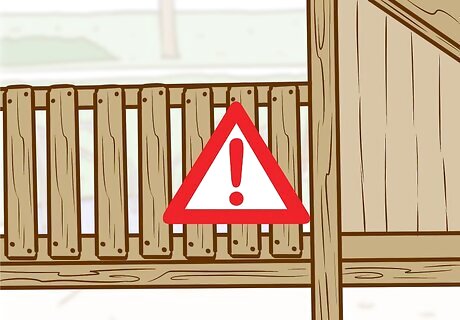
Be aware of the dangers of treated lumber. Some playground equipment is built with treated lumber. Treated lumber contains arsenic, which can be found on the lumber itself and in any fill or surface surrounding the equipment. If your child is playing on a treated lumber playground, caution them never to put their hands in their mouths. Wash your child's hands thoroughly with soap and water when they're done playing, and don't allow them to eat while playing on a treated lumber playground.
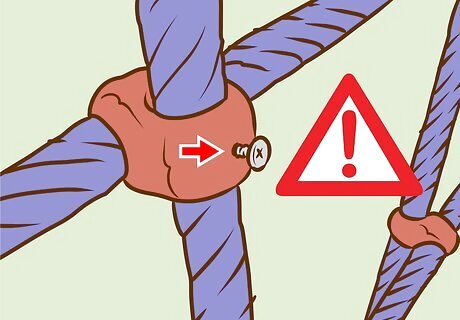
Make sure bolts and screws are flush. Go over the playground equipment carefully, including areas underneath the structures, and make sure there aren't any bolts or screws sticking out that could snag your child. If bolts or screws are loose, check the structure to make sure it's still stable. If you have doubts about whether the structure is stable, don't allow your child to play on that equipment.
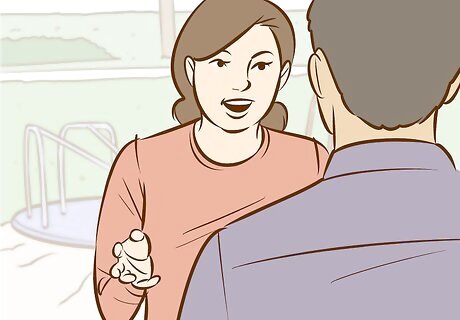
Alert officials to any hazards. If your child is playing on a public playground, you should be walking through it every time your child visits. Any hazards you spot should be fixed so that other children aren't also exposed to the safety risk. Find out who is in charge of inspecting and maintaining the playground so you know who to contact if you see something dangerous on the child's playground. Contact the person in charge of the playground and find out how it is maintained, how often it is inspected for damage or hazards, and when repairs were last made.
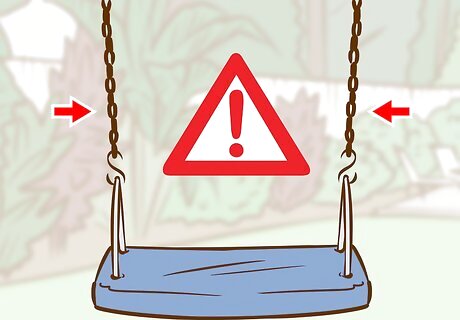
Check chains on swings. The chains by which swings are attached to suspension bars can pinch tiny hands. If the swing is hanging by a chain, make sure all the links are closed. Ideally the chain will have a rubber or plastic swing to protect the child's hands. Swings hung by rope also can cause rope burns on your child's hands if used improperly. Check ropes carefully to make sure they are not frayed. Don't let your child swing on swings if there are any open or protruding hooks or S-links, or if the chains or bars are rusty or unstable.
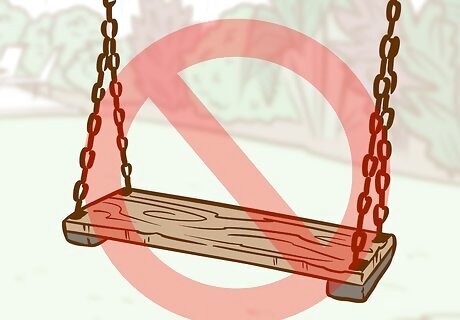
Avoid wooden or metal swings. The safest swings have plastic or rubber seats. Metal seats can cut your child, as well as getting very hot in the summer. Wooden seats have the danger of splinters. Wooden seats also may break more easily than other materials, leading to a dangerous fall. Even if the seats are made of plastic or rubber, inspect them carefully for damage before you allow your child to use them.
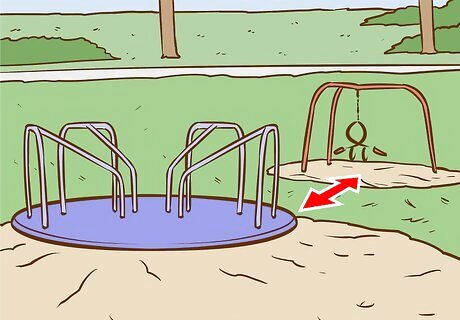
Consider the space between equipment. The space between equipment is particularly important with taller structures, which should be separated from other equipment by at least 9 feet (2.7 m) so children won't collide with other equipment in the event of a fall. If you have concerns about the spacing of equipment, you may want to stand nearby while the child uses that equipment so you can act as a spotter.
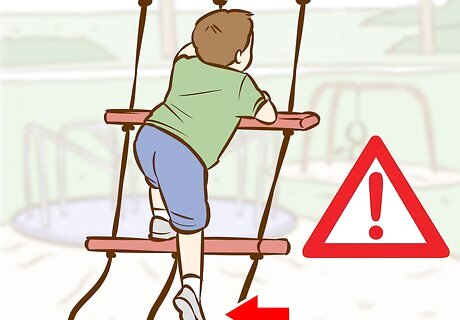
Look out for small spaces. Many playgrounds have ladders for children to climb to reach more elevated play places. If the rungs of the ladder are less than 3.5 inches, or more than 9 inches apart, the child's arm or leg could get trapped there. If you're concerned about the safety of the ladder, stand nearby and assist the child when they climb the ladder, or don't allow them to use the ladder at all. Be especially cautious with rope ladders, particularly if your child is younger or has a mental or physical condition that affects their balance or coordination.
Setting Ground Rules
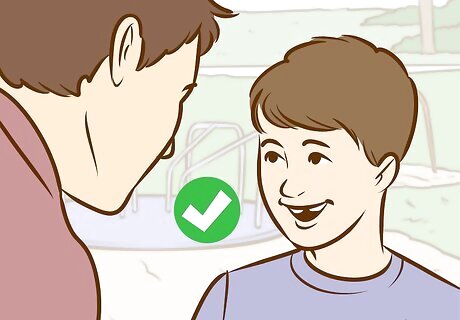
Discuss playground safety with your child. Your child needs to understand how to use playground equipment safely and how to behave on the playground, as well as how to play well with other children. Keep in mind that younger children play differently than older children. If there are a lot of older children on the playground, you may want to take your younger child somewhere else. Similarly, if your child is older, teach them to take care and look out for younger kids who might be playing. Make sure your child understands how to use the equipment correctly, and not to try risky or dangerous stunts that could lead to injury.
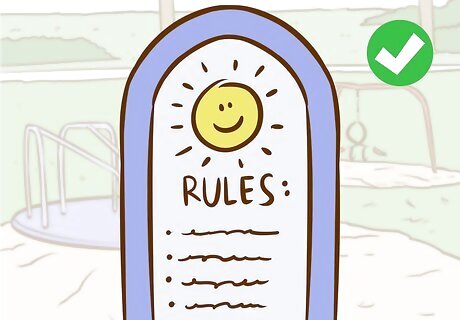
Go over any posted rules at the playground. Many playgrounds, especially those at public parks or schools, have rules of conduct posted somewhere near the entrance to the playground. While most of these will be basically the same, some will vary depending on the playground's equipment and location. Both you and your child should be familiar with these rules. Make sure your child understands them and has agreed to follow them before you allow the child to play.
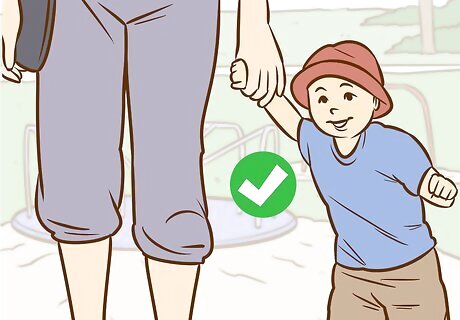
Walk through the playground with your child. If it's your first time visiting a particular playground, touring it with your child allows you to point out any hazards as well as explain to your child the proper uses of equipment. Ask your child questions to actively involve them in the experience. Get them thinking about which pieces of equipment they want to use, as well as which things make them nervous. Let them know if there are any pieces of equipment that are off limits, or that you want to be nearby when they use them, and explain the dangers posed.
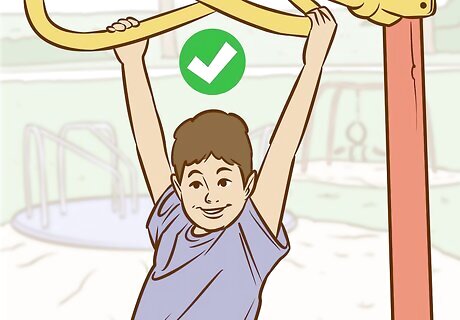
Allow children to play only on age-appropriate equipment. If you have a younger child, seek out a playground at an elementary school that is geared toward your child's age group, rather than a larger public playground where there may be equipment for older children. Some playgrounds have separate areas set apart for younger children as well. Keep in mind that children can be tempted to play on equipment they're too young to use, especially if they want to impress other kids who might be around.
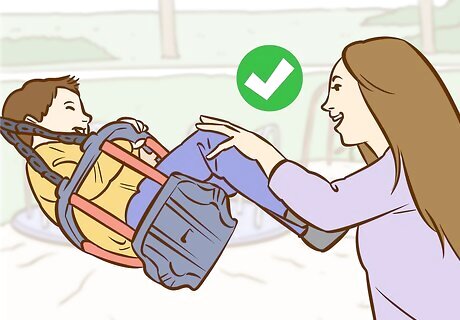
Provide active supervision. No matter how safe the playground, children are more likely to get hurt if they are playing without supervision. Active supervision means you are paying attention to your child and watching them closely. Make sure your child is clearly and directly visible at all times. It's not necessary to hover over your child, but you should be within a few feet of them, especially when they're younger. Avoid distractions while your child is playing on the playground. Don't check text messages on your phone or answer a phone call. Just a few seconds is all it takes for the child to get into a dangerous situation.


















Comments
0 comment